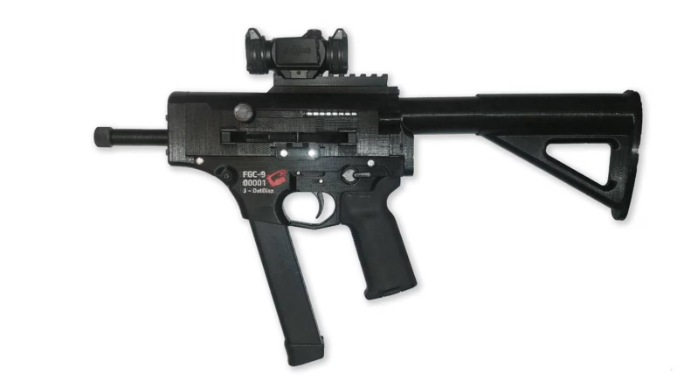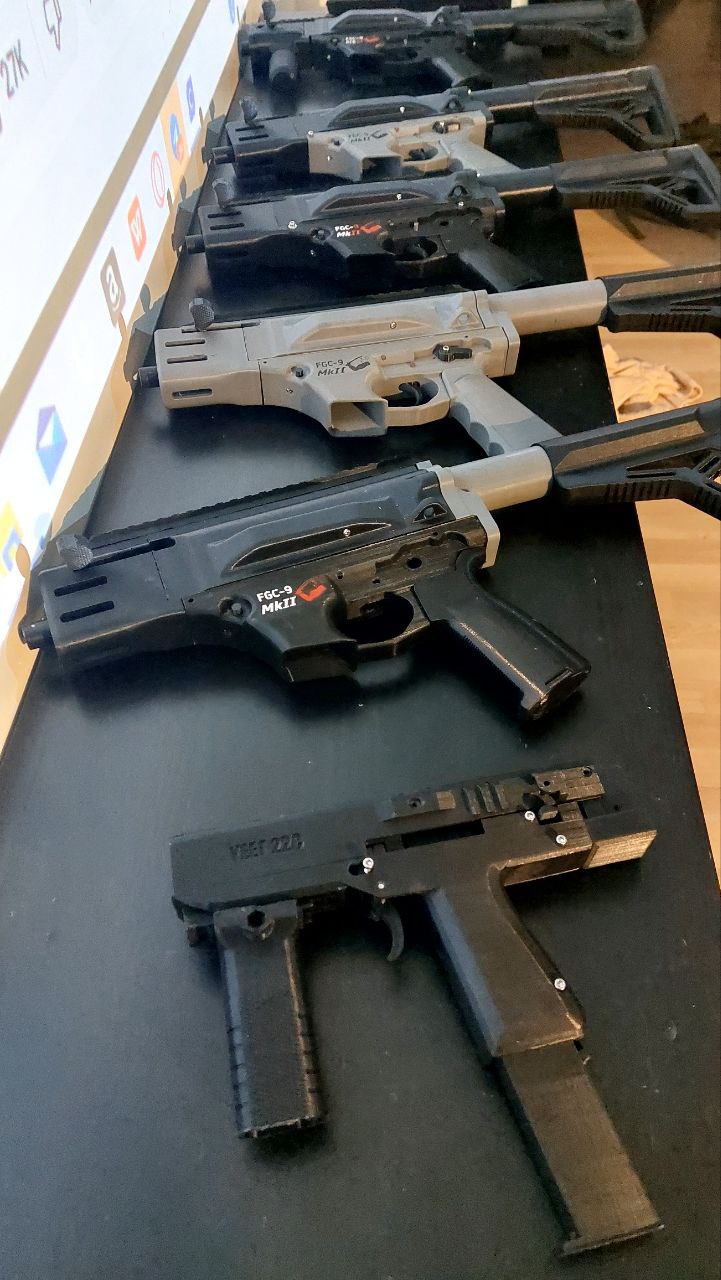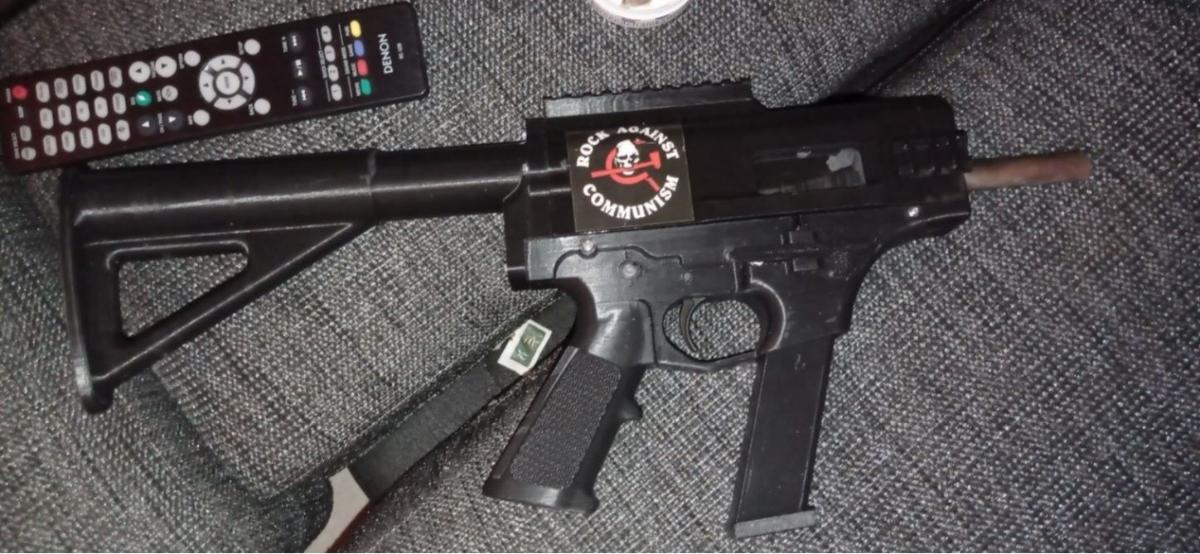From early muskets to modern handguns and rifles, Europe has a rich history of firearm production, with many famous manufacturers, such as Beretta in Italy, Heckler & Koch in Germany, and Fabrique Nationale Herstal in Belgium. As the birthplace of numerous firearm innovations, it’s safe to say that this continent has played a significant role in the history and development of firearms worldwide. Building on its rich legacy of firearm innovation, Europe has served as the birthplace of one of the most well-known 3D-printed firearms in the world, the FGC-9 (F**k Gun Control-9). This weapon, now known to have been developed by former German military member Jacob Duygu (better known online as JStark1809), has spread 3D printed firearms from a niche craft to a global phenomenon.
Unveiling the challenges
Over the last few years, European law enforcement agencies have been keeping a watchful eye on the rise of 3D printed guns. These designs have been making headlines lately due to their ties to criminal activity. In the last month alone, the UK’s National Crime Agency (NCA) disclosed a concerning surge in the number of 3D printed firearms seized—an increase from just three in 2021 to 17 in 2022. Graeme Biggar, the head of the NCA, called for legislative measures to criminalize the possession of 3D printed gun blueprints.
The cases of law enforcement agencies finding 3D printed guns, gun parts, or CAD files continue escalating every month. For example, in Finland, the court recently convicted three neo-Nazis of planning attacks against migrants, critical infrastructure, and political opponents, as they intended to use 3D printed semi-automatic guns and other weapons, evidenced by court presentations. Meanwhile, just days ago, Belgian anti-terrorism investigators detained an alleged member of an extreme right group suspected of planning bomb attacks and sharing 3D printed gun manuals.

Finnish police seized four 3D printed firearms (FGC9), numerous printed gun parts, and 1,500 cartridges that fit the printed weapons. Image source odysee.com.
Legal Maze
While these aren’t isolated cases, the legality of 3D printed guns in Europe is a multifaceted puzzle. At its core, making and owning homemade firearms, including 3D printed guns, is prohibited across European Union (EU) countries. However, the specifics of regulations and penalties vary from one nation to another. In certain parts of Europe, the law considers even possessing 3D printable files for firearms a criminal offense. The legal framework balances the right to innovate and 3D printing while ensuring public safety and security.
Aviation security professional and 3D printed gun expert Zoltán Füredi shed light on the surrounding European hybrid firearm designs, such as the FGC-9, and the current situation of these guns.
“While the United States serves as the epicenter of the 3D-printed gun movement, it’s a remarkable example of how open-source, decentralized, and dispersed networks of individuals can lead an entire movement with a swift evolution of design and manufacturing solutions,” says Füredi. “Whether it’s in Europe (designers like JStark), South America (Zé Carioca), or Asia (Yoshitomo Imura), early prototyping and peer-reviewed beta testing often take place in the U.S. or other locations discreetly, then after meticulous testing and guide creation, the files are usually uploaded.”
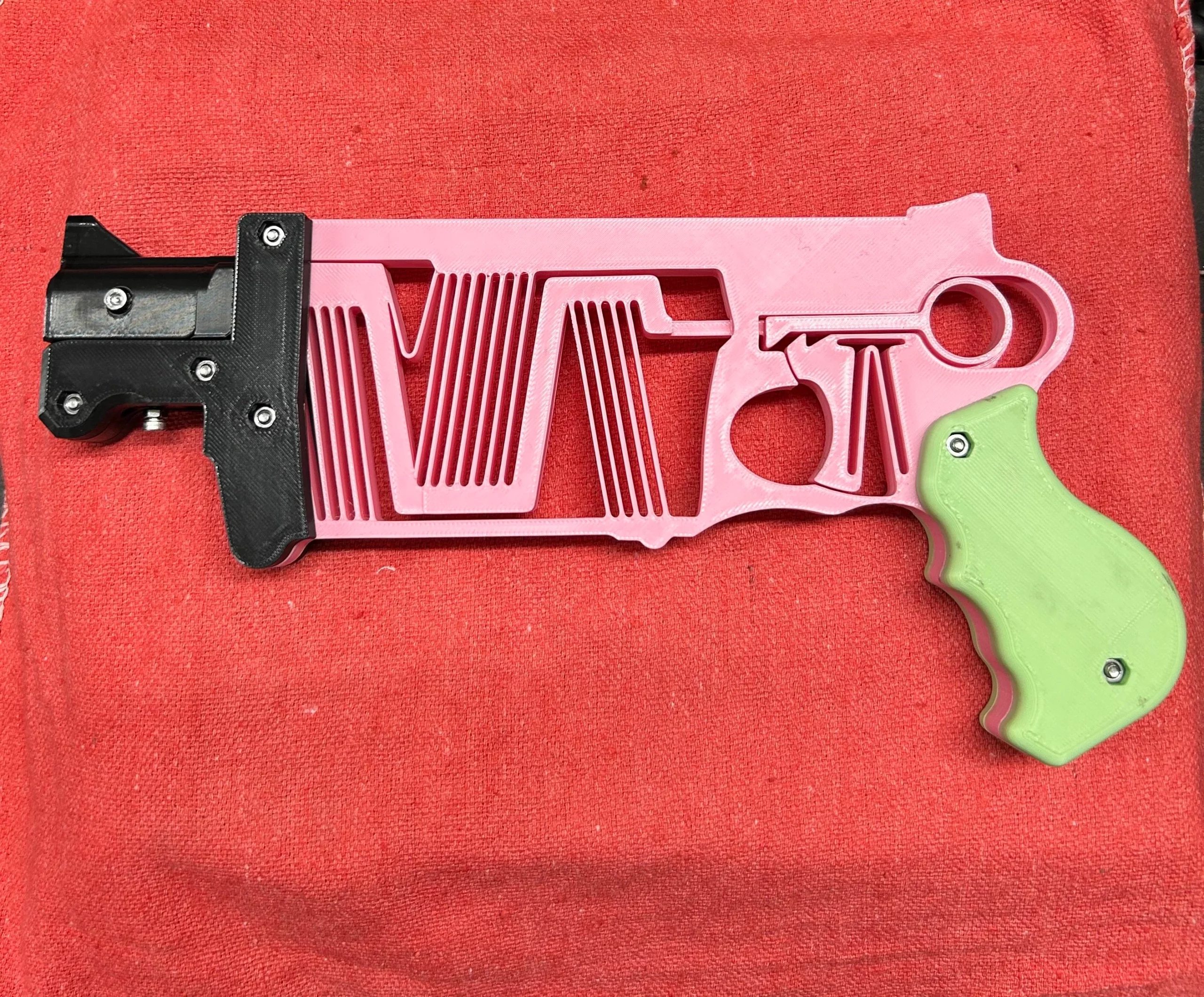
A 22lr single-shot 3D printed firearm, using the compliant mechanism to strike the primer of the bullet with the firing pin. Image source Reddit.
These designs stand out due to their intricate blend of various design concepts and materials. However, their complexity demands a deep understanding of firearm mechanics and engineering. This also allows 3D printing, unregulated or non-gun components, readily available materials, and straightforward manufacturing techniques to create functional weapons. But, he says achieving a reliable and safe designs can be challenging, often involving a substantial amount of trial and error.
“What sets hybrid designs apart is their potential for global accessibility, making them the most sought-after gun files worldwide. It’s not so simple. Constructing hybrid firearms, like the FGC-9, typically necessitates specific skill sets, access to tools, possibly some light machinery, and knowledge of materials. The intricacy of these designs implies that individuals interested in such projects must dedicate time and effort to acquire the necessary skills.”
Detection Challenges
Do-it-yourself (DIY) hybrid builds can present significant challenges for law enforcement agencies. These firearms, as Füredi remarks, do not have standard or regulated components that authorities can easily trace. He also notes that manufacturing them locally and almost entirely in isolation, without attracting attention from authorities, might be one of the safest methods, though not necessarily the easiest, to acquire weapons.
Füredi believes that the need for more knowledge among airport security personnel regarding these weapons is a pressing issue. While fully 3D printed guns are rare and unreliable, hybrid designs present detection challenges similar to traditional firearms. With an emerging threat peeking at the helm, raising awareness may be necessary to address this emerging trend.
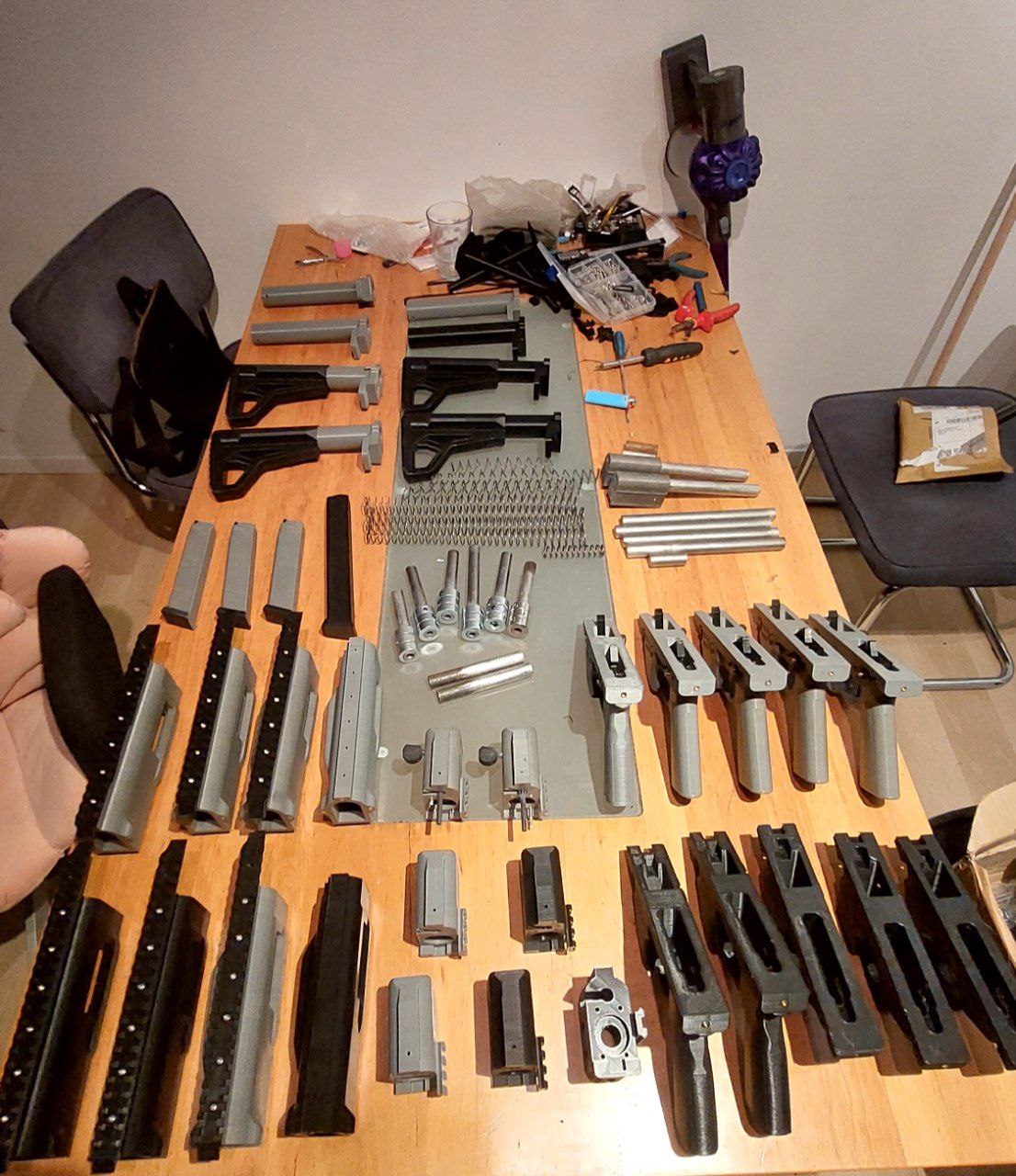
3D Printed gun workshop in Western Europe printed FGC-9s and a Yeet22, plus gun parts and components. Image source Telegram.
Security measures need to adapt to this evolving landscape, according to Füredi. The expert suggests that steps like enhancing intelligence sharing, updating training programs, and even engaging with the 3D printed firearm community for dialogue and collaboration could also yield valuable insights. Füredi advises the overwhelming majority of this community consists of individuals who share a common passion for 3D printed firearms as a hobby rather than engaging in criminal activities. They could become a resource rather than an obstacle for law enforcement, security services, and policymakers. Ensuring there is dialogue and collaboration with the community can lead to a better understanding of developments and potential risks associated with 3D printed weapons. It will guarantee that everyone knows what they are addressing once the emergence of these weapons in the hands of criminals becomes a challenge.
Silent weapons
“Fully 3D printed designs are not very common and are generally considered unreliable as weapons. However, there has been an increase in incidents involving more rudimentary firearms or improvised weapons, as in the case of the assassination of Shinzo Abe. While the possibility of a fully printed gun being used in an attack or hijacking situation exists, its probability is very low due to significant limitations, including assembly, ammunition, concealment, or the ability to fire multiple shots one after the other.”
On the other hand, hybrid designs or kit builds (parts kit completion) may pose similar challenges to traditional firearms regarding threats and detection. Füredi insists that these designs often incorporate a mix of printed and conventional components, potentially making them more reliable and effective but also more easily detectable. Therefore, airport and aviation security must remain vigilant and adaptable to address these issues. It’s crucial to keep the currently deployed firearms detection measures and possibly enhance them by ensuring that screeners and security personnel are familiar with this emerging threat.
Navigating new tides
As these weapons evolve and more criminals use them, they will present more challenges to policymakers. While banning 3D printable gun files may serve as one potential approach to address this issue, Füredi recognizes that pushing the movement underground may not yield desirable long-term outcomes.
Moreover, Füredi stresses that 3D printed guns have the potential to reshape the current trends and methods related to weapons and change tactics employed by criminals, insurgencies, terrorist cells, or non-state actors, especially concerning firearms or weapons logistics, including production, manufacturing, smuggling, and more.
“I consider 3D printing as one of the most profound changes in privately manufactured firearms. It has shifted the production of illicit firearms from the fringes, once reserved for those with specialized skills and tools, to a realm where a wide array of individuals can access these resources, marking an unprecedented development.”
The landscape of 3D printed guns in Europe is a complex interplay of innovation and security concerns, concludes Füredi. He says there is a significant focus on automated detection and leveraging AI, particularly in combination with neural networks and computer vision. This holds the potential to substantially enhance the existing detection tools available to various industries, including aviation and other high-risk sectors.
“This technological synergy can provide the desired level of security measures and protection, effectively addressing evolving threats, including 3D printed weapons,” concludes Füredi.
As law enforcement agencies grapple with the hurdles of 3D printed guns, striking the right balance between innovation and public safety is the key to navigating this uncharted territory.
Subscribe to Our Email Newsletter
Stay up-to-date on all the latest news from the 3D printing industry and receive information and offers from third party vendors.
You May Also Like
Further Understanding of 3D Printing Design at ADDITIV Design World
ADDITIV is back once again! This time, the virtual platform for additive manufacturing will be holding the first-ever edition of ADDITIV Design World on May 23rd from 9:00 AM –...
3D Printer Maker EVO-tech Reborn as NEVO3D — Once More With Feeling
EVO-tech was a 3D printing service and original equipment manufacturer established in 2013 and based in Schörfling am Attersee, Austria. The company produced high-quality material extrusion systems featuring linear bearings,...
3D Systems Brings 3D Printed PEEK Cranial Implant to the U.S. with FDA Clearance
For more than 10 years, 3D Systems (NYSE:DDD) has worked hand-in-hand with surgeons to plan over 150,000 patient-specific cases, and develop more than two million instruments and implants from its...
CDFAM Returns to Berlin for Second Annual Symposium
The second CDFAM Computational Design Symposium is scheduled for May 7-8, 2024, in Berlin, and will convene leading experts in computational design across all scales. Building upon the first event...


